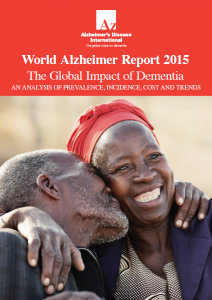As anyone with a family member with Alzheimer’s will know that it is a full time job caring for them. And it is not just about giving them attention; you have to research about a lot on Alzheimer of things which you never thought would come up.
For example, after my uncle was diagnosed one thing that later came up was how to ensure that he got enough exercise in the later stages of the disease. And such things really matter.
Exercise is good for everyone, and matters a whole lot more for people with Alzheimer’s disease. Exercise unfortunately does not cure the condition but it does help to ease some of its symptoms. And anything that helps our loved one has to be considered.
How does Exercise help Alzheimer’s patients?
When one says the word exercise, most people think of running, swimming or going to the gym. However exercise is a lot more than that. Any physical activity that can increase your heart rate and make you breathe more deeply can be defined as exercise. This means every day activities such as gardening, dancing and walking also count as exercise. Also chores like gardening and doing the laundry not just lead to physical exercise, but their simple repetitive nature also helps inoculate a sense of peace and security in people with Alzheimer’s. Tasks like folding laundry may not be really intensive exercise but they help because these tasks do not involve decision making and remembering what to do next thus they are a source of meditation almost, making anxiety drop. And when they finish they feel good, knowing that they have accomplished something.
Beside lowering anxiety there are other benefits which exercise brings for people with dementia:
Exercise can serve as a great way to ensure they get opportunity for social interaction. My uncle loves going to the park for a walk. And it makes for a great time for me to actively converse with him too.
Exercise improves their sleep.
Their ability to self-sufficient, that is dress themselves, clean and even cook can be done more efficiently if they are fit physically.
Studies have shown that exercise does help to improve memory and slow down the mental decline.
Exercise leads to the release of endorphins, which in turn leads to an overall improved mood, confidence levels and overtime greater self-esteem.
Getting started with exercise
It is important that you go to the doctor for advice before you start developing an exercise regime for your loved one. This is more important for older patients, especially those who had so far not undertaken regular exercise.
What is the right amount of physical activity in the early to the middle stages of dementia?
There is no standard answer to this question and the amount of exercise really differs from person to person. Most health organizations recommend that adults should at least get 150 minutes of moderately strenuous physical activity each day. This translates to 30 minutes for 5 days a week. However you do not have to maintain a continuous 30 minute session. You can break down 30 minutes into 10 or 15 minutes sessions. For example, I take my uncle to a 10 to 15 minute walk to the grocery shop. And then later in the evening he and I do our push-ups and crunches.
Each year in November we celebrate Alzheimer’s awareness day. It is great that we have dedicated a day to them, but we should remember that they require our attention throughout the year and the little things go a long way. So go for regular walks with your loved ones, be they in the park or to the local supermarket but do keep them physically active.




